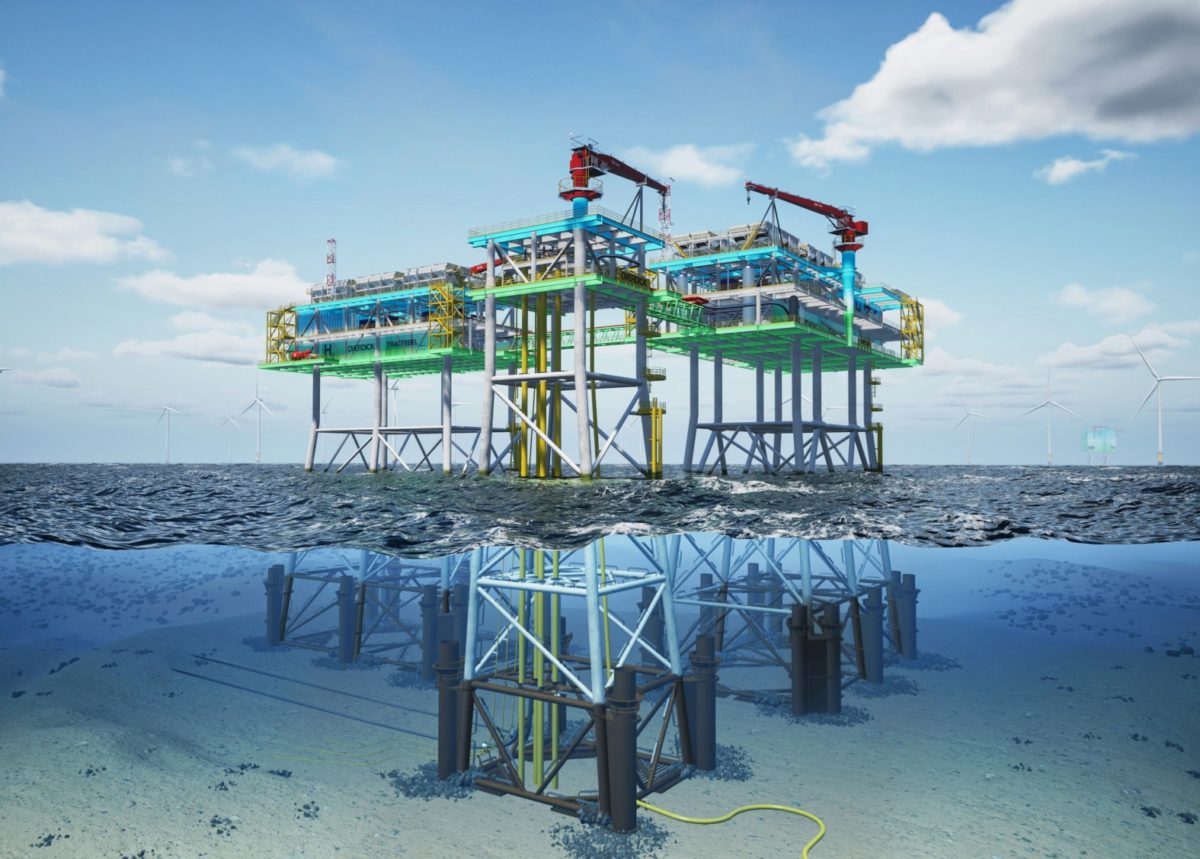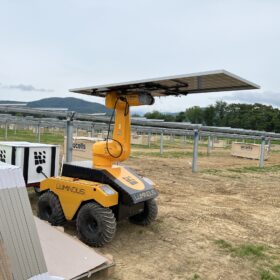From pv magazine Global | via the Hydrogen Stream
The Tractebel engineering subsidiary of French utility Engie is part of a partnership which has developed an offshore concept for the storage of hydrogen in caverns, a system the project partners have called a global first. “The design study … outlines an innovative solution for large scale hydrogen storage on the high seas: A scalable offshore platform for the compression and storage of up to 1.2 million m³ of hydrogen,” Engie wrote last week. “Underground salt caverns will be used as storage and buffer for the hydrogen produced offshore before the gas is transported via the pipeline network to the onshore grid, and finally to consumers and customers.” The storage and compressor platforms can reportedly process 400,000Nm3 (normal cubic meters) of hydrogen per hour, with the energy storage medium stored in underground salt caverns at a pressure of up to 180 bar.
The government of Western Australia is backing its hydrogen industry with three projects set to receive support from its lead agency services. Province Resources’ HyEnergy Project will harness 8 GW of solar and wind power generation capacity to produce around 550,000 tonnes of hydrogen per year. The Murchison Hydrogen Renewables facility will use solar and wind to produce 5.2 GW of electricity to power the production of hydrogen which will be converted into 2 million tonnes of green ammonia annually. It is expected InterContinental Energy’s Western Green Energy Hub will use up to 50 GW of solar and wind capacity to produce up to 3.5 million tonnes of hydrogen or 20 million tonnes of green ammonia per year.
The European Commission has approved, under EU state aid rules, a €900 million (AU$14 million) German scheme to support investment in the production of renewable hydrogen in non-EU countries, which will be then imported to the EU. “The scheme, called H2Global, aims at meeting the EU demand for renewable hydrogen that is expected to significantly increase in the coming years, by supporting the development of the unexploited renewable resource potential outside the EU,” wrote the commission yesterday. The ten-year project will be managed by special-purpose entity Hint.co. “This intermediary will conclude long-term purchase contracts on the supply side ([for] green hydrogen production) and short-term resale contracts on the demand side (green hydrogen usage),” said the commission. Prices will be determined via a double-auction model, where the lowest bid price for hydrogen production and the highest selling price for hydrogen consumption will each be awarded contracts.
Spanish company H2B2 Electrolysis Technologies is developing a project to generate up to 1,000kg per day of solar-powered emission-free hydrogen in California. The SoHyCal project, in Fresno County, consists of the construction, financing and operation of a renewable hydrogen production plant using polymer electrolyte membrane (PEM) technology, and with a nameplate capacity of up to 3,000kg per day.
Hydrogen-powered equipment was mentioned as part of Hyundai Construction Equipment‘s plan to invest €150 million into its Ulsan production plant, in South Korea, to increase capacity by 50% to more than 15,000 machines per year. “The move will support Hyundai’s growing presence in the booming global construction equipment market while providing a manufacturing base for a new generation of electric and hydrogen-powered equipment,” the company wrote yesterday.
Sweden has shown it has the potential to become a pioneer in green steel production, according to a note released today by U.S.-owned analyst Wood Mackenzie. The Nordic nation produces 3.2% of the crude steel made in the EU and U.K. Sweden’s steelmakers expected to bank on the cost reductions offered by alkaline electrolysis technology, as well as benefiting from the declining cost of renewables and rising carbon prices, according to WoodMac. “At a levelised cost of electricity at $30/MWh, wind power is a highly economical source of power generation in Sweden today,” wrote the analyst. “Further cost reductions are expected, with better financing structures for onshore wind, lower capex [capital expenditure levels] for onshore and offshore installations, technological optimisation for asset management, and state support for offshore grid infrastructure.” WoodMac added, the combination of hydrogen from alkaline electrolysis and energy from onshore wind is the most cost-effective option for green crude steel production in Sweden. “Assuming a carbon price of US$100/tonne, green steel producers could benefit from US$85/tonne of carbon credits,” wrote the analyst. “Better financing models for onshore wind and 48% lower capex for alkaline technology in 2025, yield [a] steel cost of US$360-390/tonne in carbon price scenarios ranging between $50/tonne and $150/tonne.”
This content is protected by copyright and may not be reused. If you want to cooperate with us and would like to reuse some of our content, please contact: editors@pv-magazine.com.








By submitting this form you agree to pv magazine using your data for the purposes of publishing your comment.
Your personal data will only be disclosed or otherwise transmitted to third parties for the purposes of spam filtering or if this is necessary for technical maintenance of the website. Any other transfer to third parties will not take place unless this is justified on the basis of applicable data protection regulations or if pv magazine is legally obliged to do so.
You may revoke this consent at any time with effect for the future, in which case your personal data will be deleted immediately. Otherwise, your data will be deleted if pv magazine has processed your request or the purpose of data storage is fulfilled.
Further information on data privacy can be found in our Data Protection Policy.